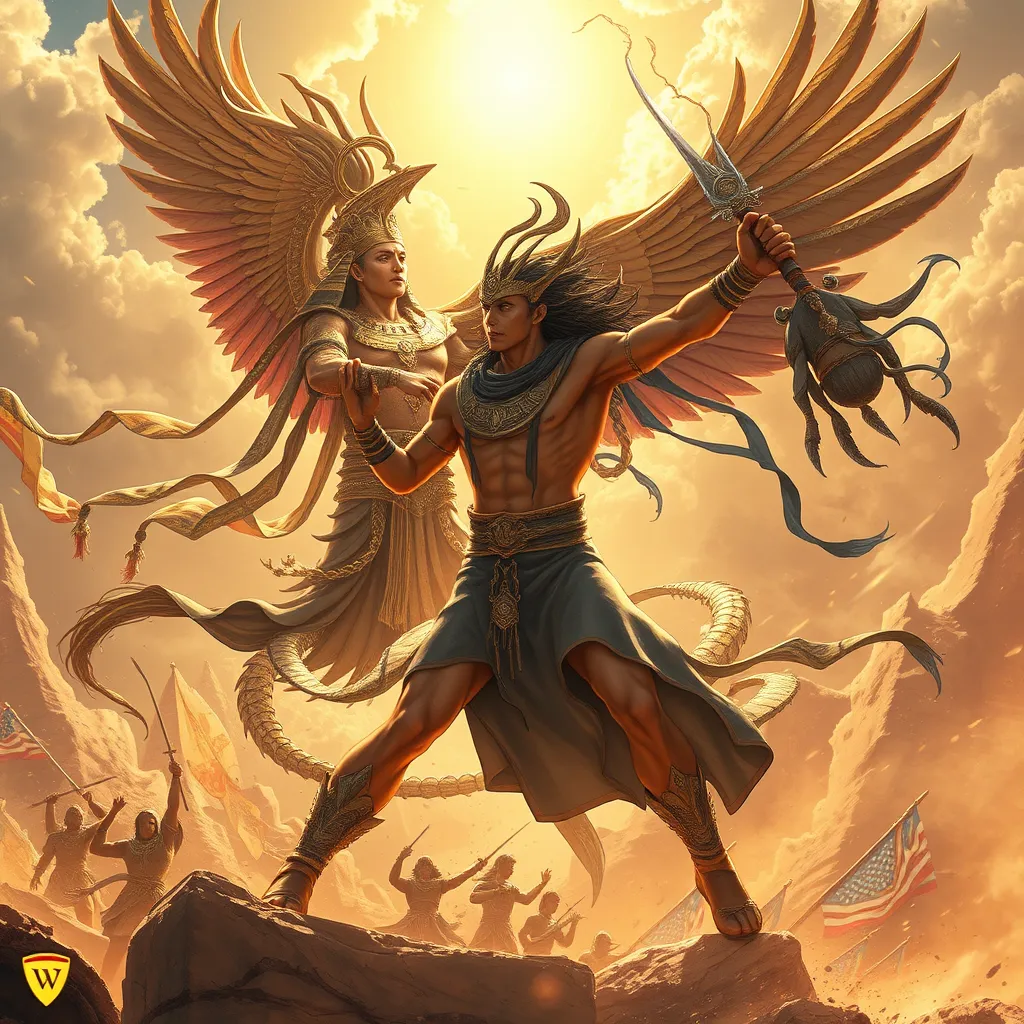The God of the Wind: Shu’s Battle with Set and the Creation of the World
I. Introduction
Egyptian mythology is rich with intricate tales and profound symbolism, encapsulating the beliefs and values of one of the world’s oldest civilizations. Among the pantheon of deities, Shu, the god of the wind, and Set, the god of chaos, stand out as pivotal figures whose legendary rivalry significantly shapes the narrative of creation. This article explores the significance of their battle, the roles they play in the cosmos, and the implications of their conflict in the Egyptian creation myth.
II. The Role of Shu: God of the Wind
Shu is often depicted as a man holding a feather or as a figure associated with air and light. His attributes and symbolism are essential in understanding his role in Egyptian cosmology.
- Attributes and Symbolism: Shu represents air, light, and the space that allows creation to flourish. He embodies the breath of life, essential for existence.
- Importance in Egyptian Cosmology: As the god of the wind, Shu separates the sky from the earth, creating a space for life to thrive. He is instrumental in maintaining the balance of the universe.
- Relationship with Other Gods: Shu is the husband of Tefnut, the goddess of moisture. Together, they are considered essential for the creation of life, highlighting their interdependence in the mythological framework.
III. Set: The God of Chaos
In stark contrast to Shu, Set is known for his chaotic nature and tumultuous spirit. His characteristics and symbolism play a critical role in his opposition to the structured order that Shu represents.
- Characteristics and Symbolism: Set is often depicted as a figure with a curved snout, symbolizing disorder and chaos. He is associated with storms, desert, and the unpredictability of nature.
- Role in Egyptian Mythology: Set is a complex figure who opposes order and harmony. His actions often signify disruption, making him a necessary antagonist in the cosmic balance.
- Historical Interpretations: Over time, interpretations of Set’s character have evolved. Initially seen as merely chaotic, he has been viewed more recently as a necessary force in the cycles of life and death.
IV. The Creation Myth: An Overview
The Egyptian creation myth begins with a primordial state characterized by chaos and darkness, from which the first gods emerge.
- Primordial State of the Universe: Before creation, the universe was a vast, dark expanse known as Nun.
- Creation of the First Gods: From Nun emerged Atum, who created Shu and Tefnut, the wind and moisture, respectively. Their emergence represents the beginning of the cosmos.
- Significance of Air and Wind: The air, represented by Shu, is crucial in separating the sky from the earth, creating a habitable space for life.
V. The Conflict: Shu vs. Set
The battle between Shu and Set arises from their opposing natures—order versus chaos. Understanding the reasons behind their conflict is essential for grasping their roles in the creation narrative.
- Reasons Behind Their Battle: Shu’s establishment of order threatens Set’s chaotic reign, leading to inevitable conflict.
- Description of the Battle: Their battle is filled with dramatic elements, often depicted as a tumultuous clash of winds and storms, reflecting the struggle between stability and disorder.
- Impact on the Cosmos: The outcome of their conflict leads to the establishment of cosmic order, with Shu maintaining the balance between the forces of chaos embodied by Set.
VI. The Aftermath of the Battle
The resolution of the conflict between Shu and Set has far-reaching consequences for gods and humans alike.
- Consequences for Shu and Set: After their battle, Shu secures his place as the god of the wind, while Set is relegated to the role of a force that, although chaotic, is necessary for balance.
- Shaping the World: The battle shapes the world as it establishes the principles of order, influencing human existence and the natural world.
- Establishment of Order Over Chaos: Shu’s victory signifies the triumph of order over chaos, a theme prevalent in many mythologies.
VII. Shu’s Legacy in Egyptian Mythology
The legacy of Shu extends beyond his battle with Set, influencing various aspects of Egyptian culture and spirituality.
- Worship of Shu: Shu was worshipped in various forms, and rituals dedicated to him often centered around the themes of air and life.
- Influence on Other Deities: His relationship with Tefnut and their offspring, Geb (earth) and Nut (sky), reinforces his significance in the pantheon of gods.
- Representation in Art and Literature: Shu is depicted in art and mythological texts, symbolizing the vital role of wind and air in sustaining life.
VIII. Conclusion
In summary, the battle between Shu and Set is not just a tale of conflict; it represents the eternal struggle between chaos and order, essential for understanding Egyptian mythology. Shu’s role as the god of the wind and Set’s chaotic nature encapsulate fundamental themes that resonate throughout history. The impact of their story continues to influence modern interpretations of mythology, serving as a reminder of the delicate balance that sustains our world.




